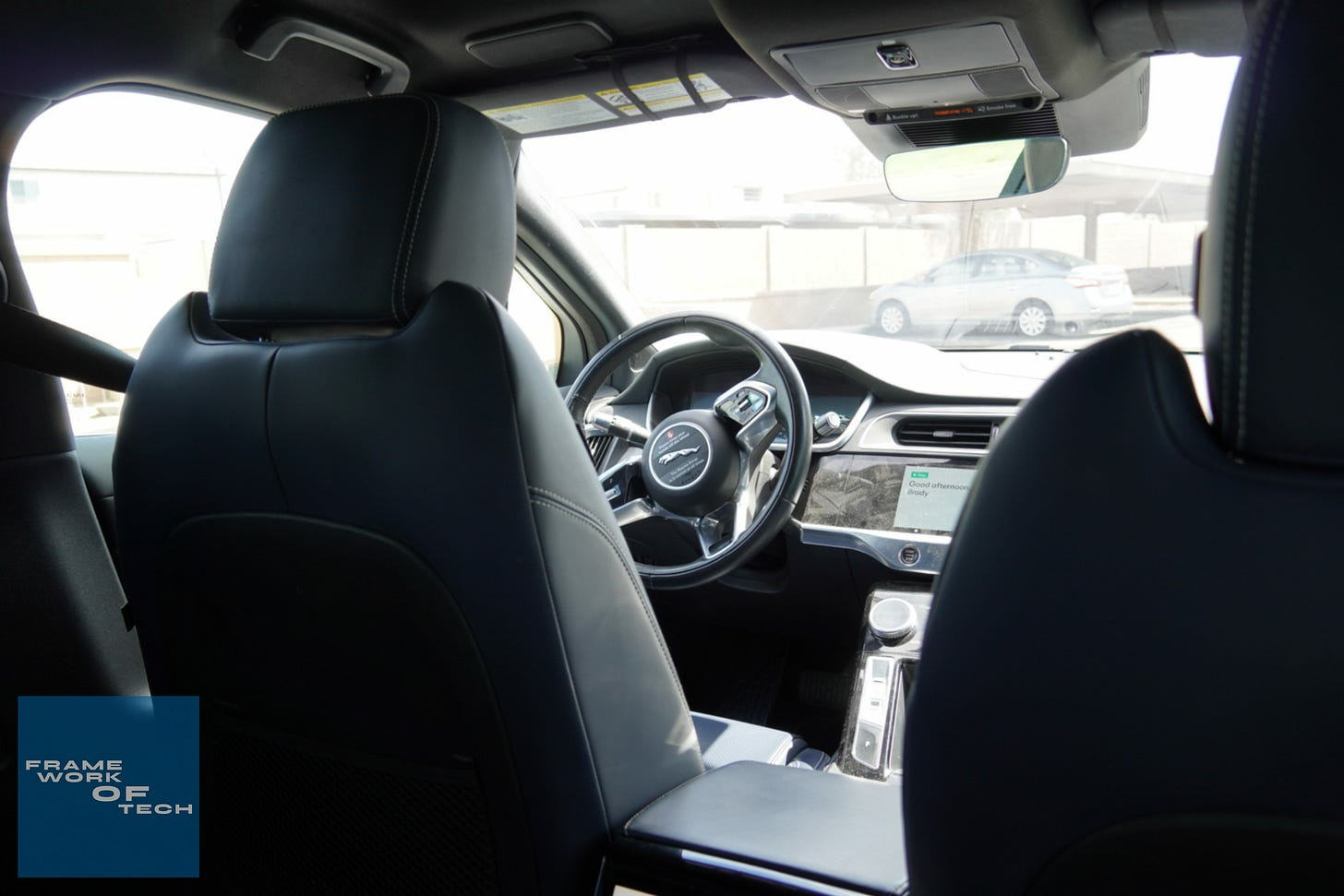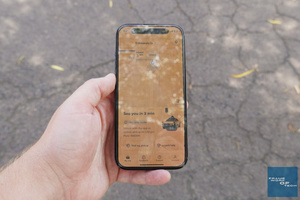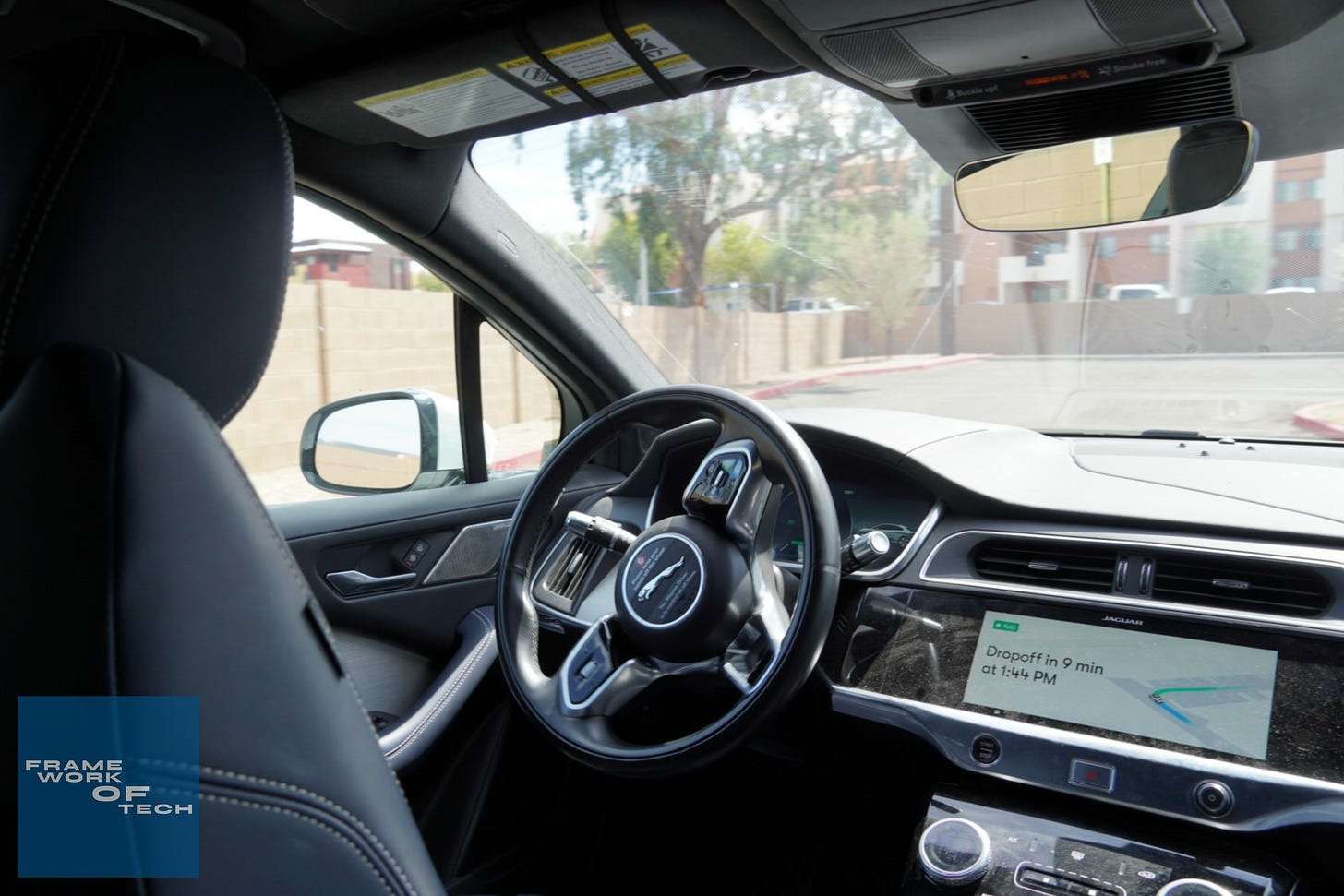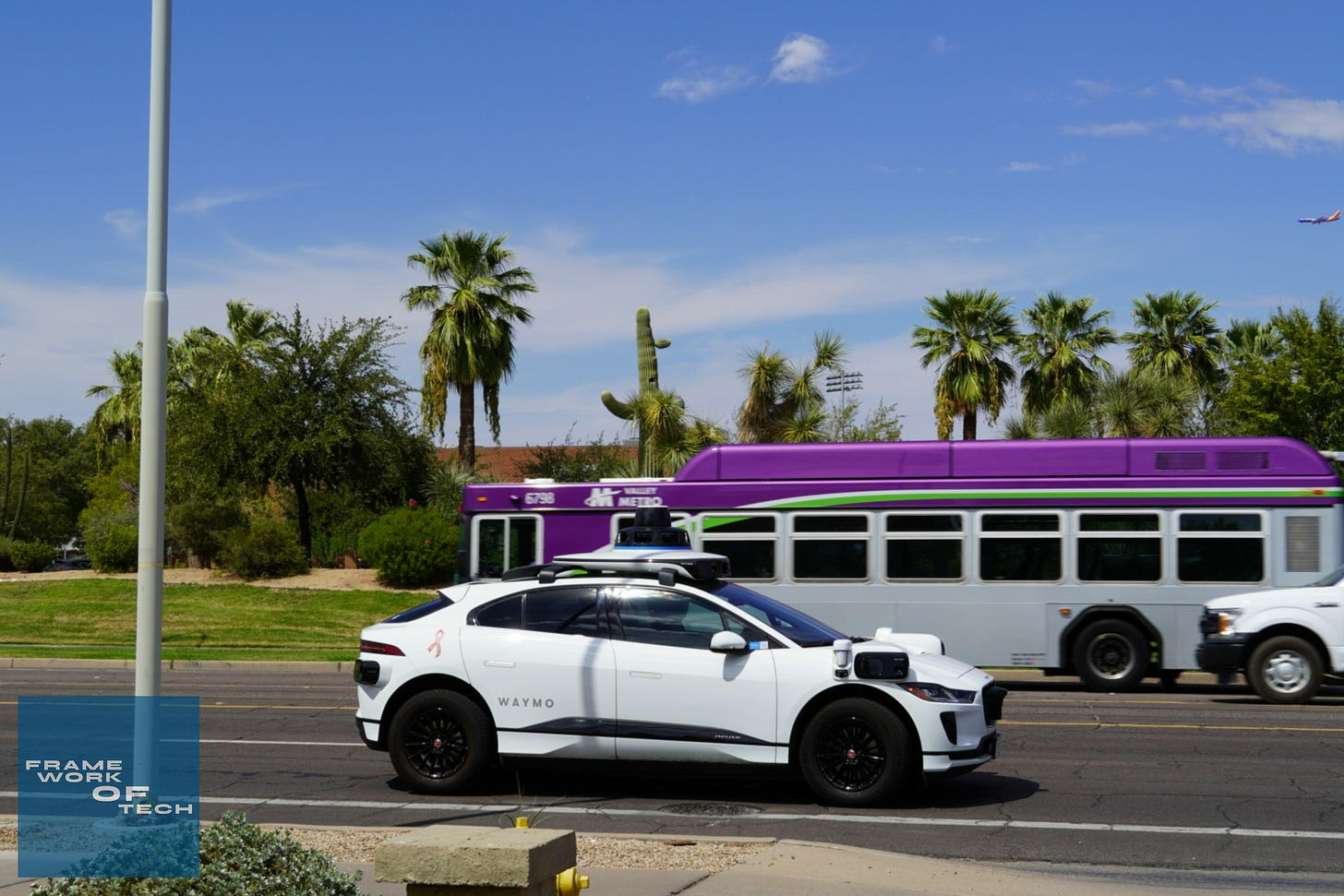📱 AI & Software
Driverless cars are here and ready — but not from the company you expect
I hate ridesharing. It’s expensive, there are “service fees” somehow separate from the cost of the ride, and I’m also expected to tip my driver because billion-dollar companies won’t pay fair wages. They’re never as quick as they say they’ll be, and I’m not much for small talk. That’s why when I spent a week in Tempe, Arizona earlier this month, I moved to enjoy my time in the sun without hailing a Lyft or Uber. As people who have tried living without a car can attest to, it’s harder said than done. That’s true even for a public transit fanatic such as myself.
So, I started my week in Tempe the same as roughly nine million people in the greater Phoenix area — by riding the Valley Metro public transit system. But eventually, you’re bound to run into a situation where public transit just can’t cut it. For me, that was when I just missed a bus running every half hour, and was trying to get to a mall five minutes away. In the 112-degree heat, I was ready to bail on public transit and cut my losses.
Then I remembered: I’m in the greater Phoenix area. It’s one of four regions in the U.S. supported by Waymo, an autonomous driving company that operates driverless taxis under the Alphabet (Google) umbrella. Phoenix — along with San Francisco, Los Angeles, and Austin — is crawling with autonomous Waymo vehicles that claim to be a safer and cheaper way to get around. Believe it or not, as of May 2023, the Phoenix region became the largest fully-autonomous service area in the world, covering 180 square miles.
At that point, I did what any curious technology enthusiast and journalist would do. I downloaded the Waymo One app on my iPhone 14 Pro, and priced out a ride to the mall. It turns out that taking a Waymo car would get me there in a quarter of the time public transit would take, only costing around $9.
Only a bit more than public transit, and giving me a glimpse of the future? I was all-in.
After riding with Waymo a handful of times, I’ve discovered that this initial experience represented the best-case scenario. You’ll often find that demand-based pricing makes short rides cost as much as $30 during the busiest times. I can live with that, as it’s the same deal with Uber and Lyft. However, the bigger issues are wait times, which can stretch to as long as a half an hour in times of peak demand. During these times, I don’t consider Waymo a great option and instead look to public transit options.
What it’s like to drive an autonomous vehicle
And more importantly, one with no failsafe
When the Waymo arrived at the pickup point, the process was fairly straightforward. But first, let’s talk about pickup and dropout points. Waymo is very picky about where it can pick you up and drop you off, presumably because it’s looking for a known safe location. In real world use, this likely means you will need to walk to the Waymo for pickup or walk to your destination after you’re dropped off. For me, this is a significant drawback to using Waymo.
If I have to walk anyway, and wait for a pickup anyway, I might as well take the $2 bus instead of the $20 Waymo.
As your car arrives, you’ll see a rotating display on the top of the Waymo with your initials to let you know it’s your vehicle. Then, with Bluetooth enabled, you can unlock the car in the app when you’re within close proximity of it. After that, all that’s left to do is hop in, buckle up, and start riding. The interior of the car is fitted with a slew of cameras and microphones, and the former is running all the time. However, Waymo says that the mics are only hot when you’re connected with rider support.
Once the car gets going, all you’ll need to do is sit back and relax. It’s natural to be worried about the Waymo Driver not being able to handle certain situations, and I was too. However, as others have said about these driverless taxis, Waymo will always be less aggressive than more aggressive. That means you’ll experience things like waiting for a few minutes at a stop sign or an outlet, but you won’t experience your car pulling out when it is unsafe to do so.
So what were my thoughts on using a self-driving taxi? For the most part, I was and still am extremely confident in the Waymo Driver’s ability to get me to and from my destinations safely. There are some things that still make me a bit nervous, like U-turns and high-speed lane changes. Based on my few hours of riding in a Waymo car, I have no reason to believe that Waymo will misjudge a traffic signal or stop sign, ignore a pedestrian, or miss a nearby vehicle.
That anecdotal evidence is backed by some facts, too: The Verge reported that Waymo has driven over a million miles autonomously and was only involved in two crashes that required federal reporting.
Are they ready for widespread use?

I agree with the statement that autonomous vehicles will be much more trustworthy when most vehicles on the road are self-driving. Human drivers are unpredictable, and I’m not sure that self-driving cars will always be able to anticipate human aggression, and human mistakes, quickly enough to avoid accidents. With that said, I still think autonomous vehicles are ready — at least from Google. Compared to Tesla’s self-driving features, Waymo seems to be on a different planet.
I'm excited for the future of autonomous vehicles, and hope that driverless taxis become affordable enough that we can ditch car ownership for good.



